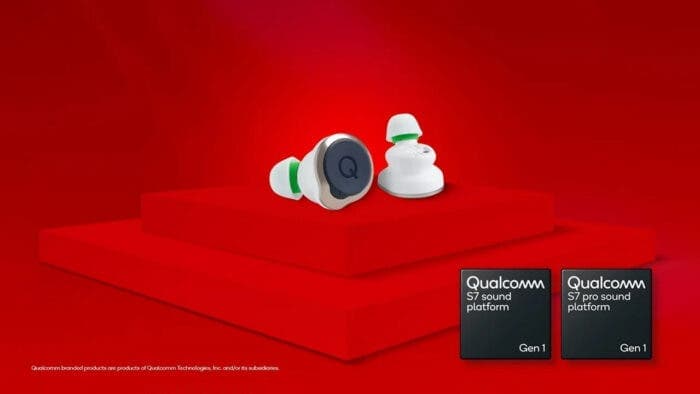Aside from unrolling the curtains on the Snapdragon 8 Gen 3, Qualcomm has also introduced the Snapdragon S7 Pro in the Snapdragon Summit. This latest audio chip from Qualcomm will power the future wireless headphones, TWS earbuds, and speakers.
The Qualcomm Snapdragon S7 Pro brings micro-power WiFi to wireless audio solutions to extend their range. This micro-power WiFi is capable of speeds up to 29 Mbps. And Qualcomm says that the range is “far beyond what is possible today using only Bluetooth.” Additionally, it will address the wireless connection stability issue without being a power hoarder.
Snapdragon S7 Pro Brings XPAN Tech
The main highlight of the Qualcomm Snapdragon S7 Pro is the XPAN tech. Qualcomm’s innovative solution stands for Expanded Personal Area Network technology. While previous technologies utilized Bluetooth or WiFi only, XPAN can take advantage of both.
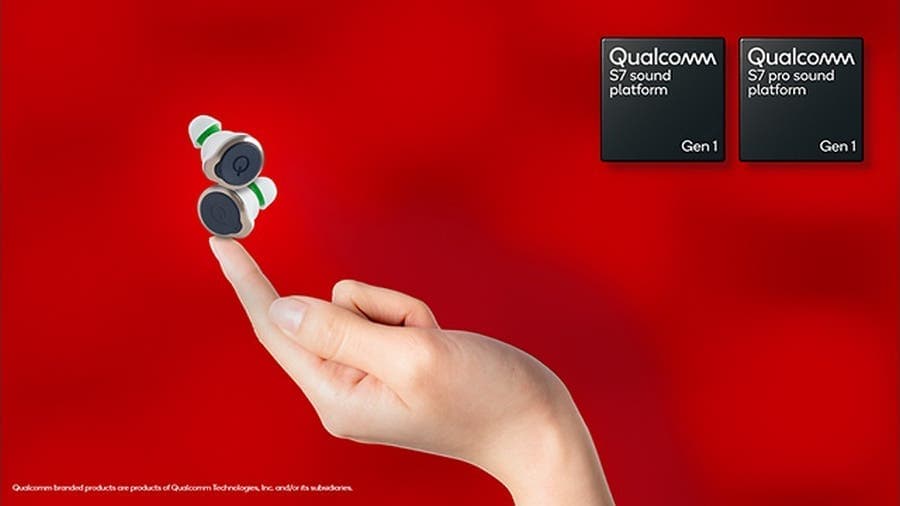
It can switch between Bluetooth and WiFi when required. About the WiFi support, Snapdragon S7 Pro’s XPAN supports 2.5 GHz, 5 GHz, and 6 GHz, which widens the compatibility. That means you don’t need to be within Bluetooth range to listen to your favorite tracks.
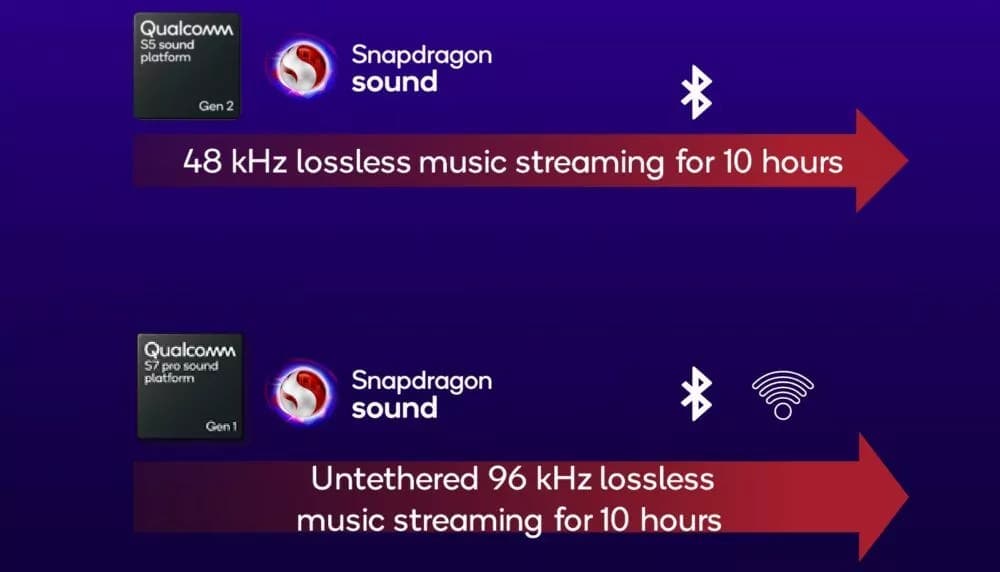
Instead, as long as you’re in your WiFi network, Qualcomm’s tech will let you listen to whatever you want. Of course, you’ll need Qualcomm tech on both ends. That means to enjoy XPAN’s features, you need a Snapdragon phone and a Snapdragon S7 Pro-powered wireless audio solution.
But Qualcomm noted that it isn’t reinventing the wheel. The XPAN tech in the S7 Pro utilizes the same traditional WiFi and Bluetooth standards. That means others could gain support over time.
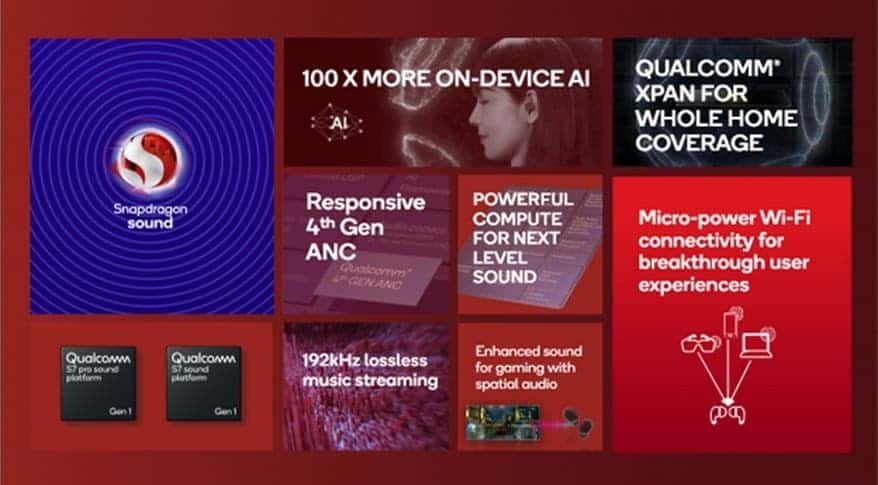
Qualcomm’s secret sauce for the Snapdragon S7 Pro’s XPAN lies in the Snapdragon Sound software stack. Also, Qualcomm’s radio expertise comes into play. There’s a new proprietary WiFi part in the new chipset alongside the Bluetooth SoC too.
How Big of An Upgrade Can It Offer?
The biggest upgrade that Qualcomm Snapdragon S7 Pro brings is better high-end listening experiences. This chipset enables lossless 24-bit 96 kHz audio. That too in the same power budget as Qualcomm’s current Bluetooth offering. For those unaware, Qualcomm’s Bluetooth solution offers lossy 96 kHz wireless audio.
More importantly, the new Snapdragon S7 Pro can go further, with up to 192 kHz sample rates. It will also bring Hi-Res multi-channel audio in the future. It will also make low latency and high bitrate audio for gaming. Currently, you need to pick either one with Bluetooth solutions.

The Snapdragon S7 Pro will also bring better battery performance across the board. As it has a micro-power WiFi solution, it utilizes less power than Bluetooth.
What Else Does Snapdragon 7 Series Can Offer?
Besides the Snapdragon 7 Pro, there’s the regular Snapdragon S7 chipset. It has the same XPAN that’s inside the Pro chipset. The two models come with Qualcomm’s fourth-generation ANC. And they support real-time blended transparency modes and context-aware adaptations.
These new Snapdragon 7 chipsets offer 100x improved on-device AI capabilities. This improvement brings enhanced features. That includes reduced latency, enhanced head tracking for driving dynamic spatial audio, and advanced environmental analysis for better noise cancellation.
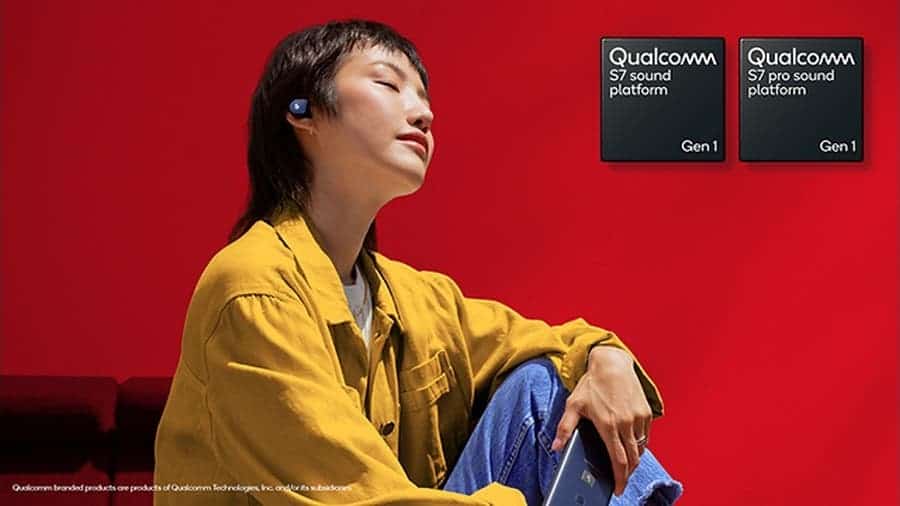
Other features of the Snapdragon 7 series include Bluetooth 5.4 support with Auracast and LE Audio. Both models also support Sound with Qualcomm High-speed link. And if that’s not enough, the new chipset brings 3x DSP performance improvements, 3x the memory, and 6x the compute performance of last-gen. All these improve the audio processing capabilities.
And for those wondering, the first pair of wireless earbuds with Snapdragon S7 are expected to land on the market in 2024.

